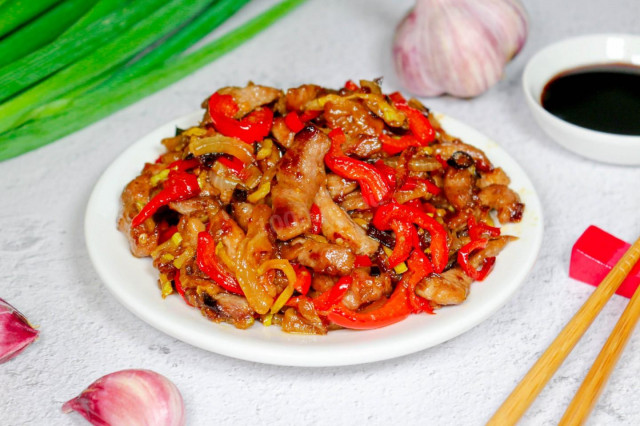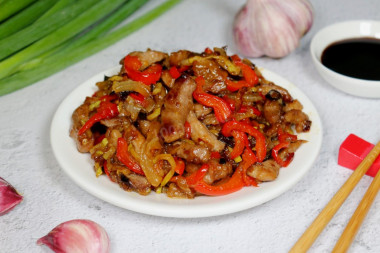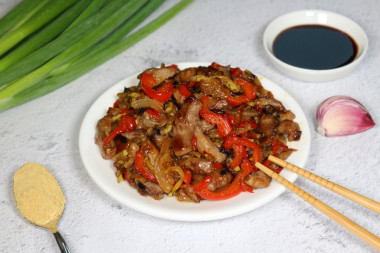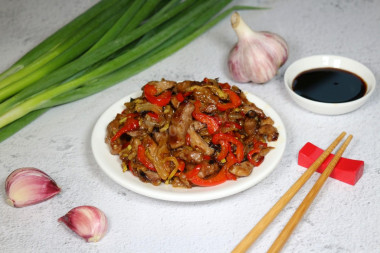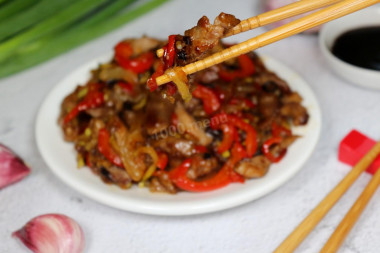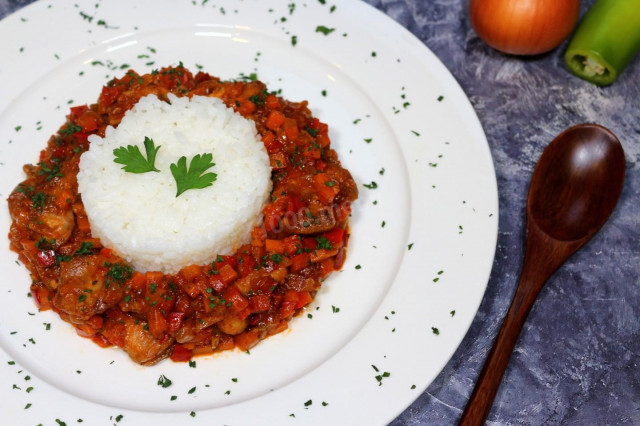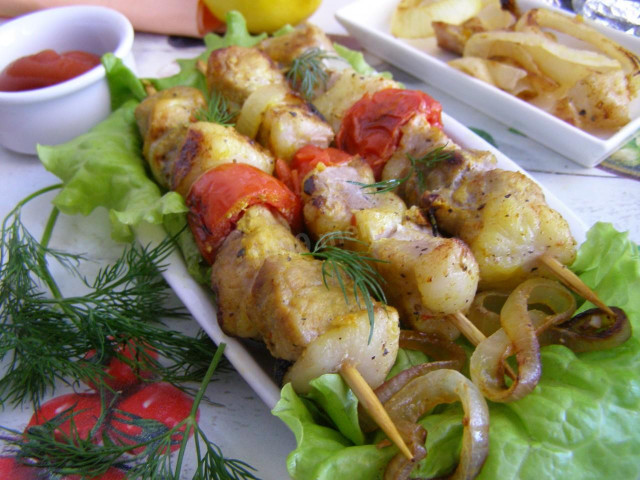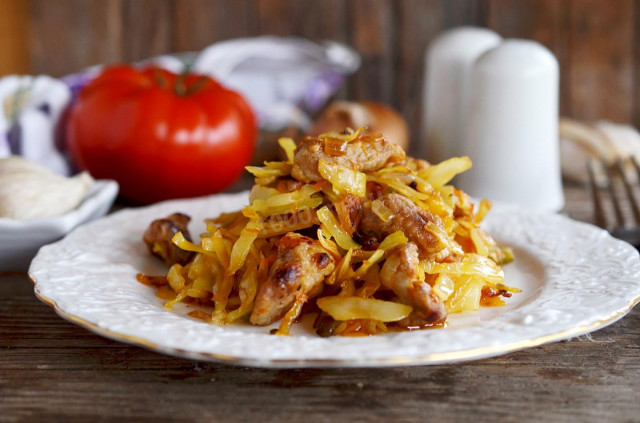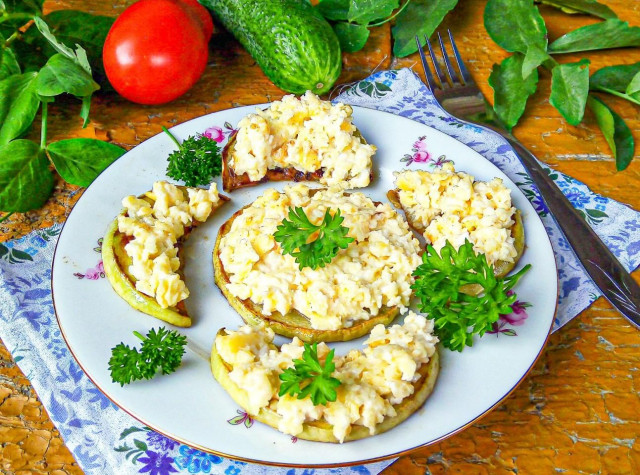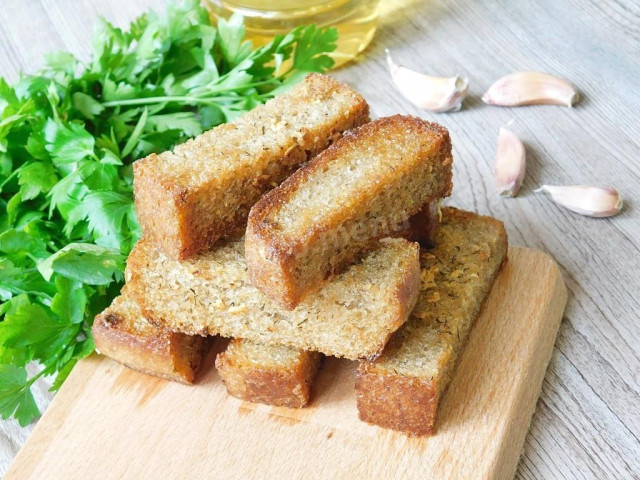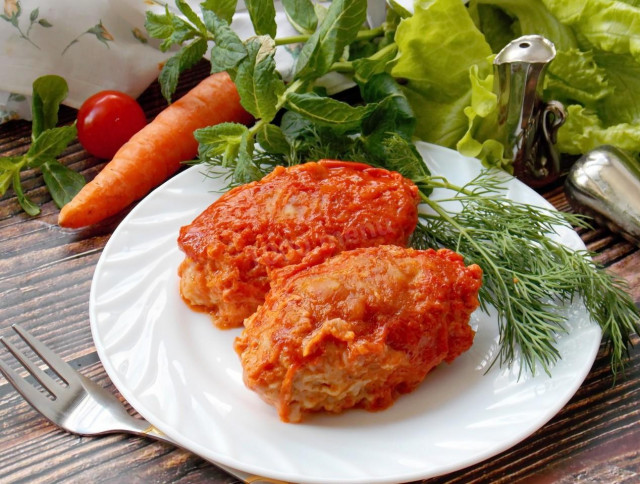Composition / ingredients
Step-by-step cooking
Step 1:
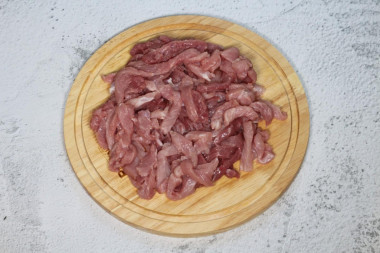
How to cook pork in Chinese? First prepare the ingredients. Take a piece of pork and rinse it under running water, then dry it a little or dip it with paper towels. Cut the pork into strips no more than 0.5 centimeters thick.
Step 2:
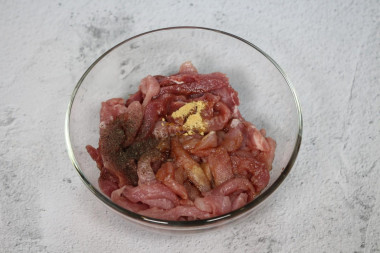
Now add a spoonful of soy sauce, ground ginger, ground black pepper, and a little salt to the pork container. Mix all the components of the container so that the strips of meat are equally covered with spices and soy sauce. Leave the pork to soak in the marinade for a while.
Step 3:
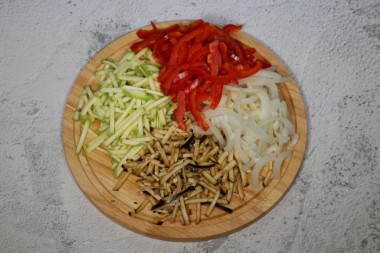
Now take care of the vegetables. They all need to be washed and wiped dry. Peel the onion from the husk, pepper – from the seeds and stalks. Chop all the vegetables into strips, cut the onion into half rings (you can use a slicer, if there is none, then cut the vegetables into strips with a conventional knife).
Step 4:
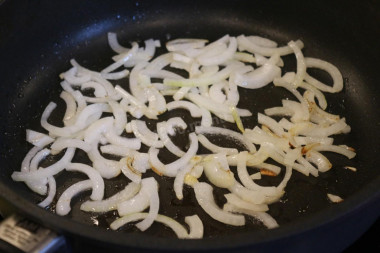
Pour a little vegetable oil into the pan and put it to warm up. At the beginning, put the onion in an already heated frying pan. Massage it for two minutes.
Step 5:
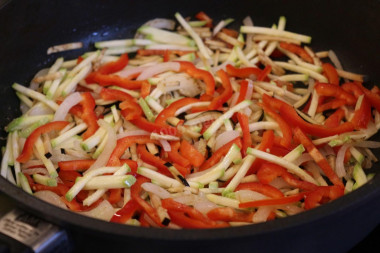
Then add all the other vegetables. Continue cooking them for 10 to 15 minutes, stirring them constantly. Put the fried vegetables out of the pan. You can fry for less than 10 minutes if you want to get vegetables with a dense consistency (it will take 7 minutes).
Step 6:
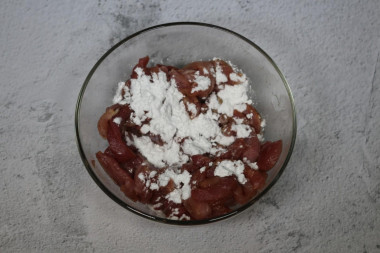
Sprinkle the pork pieces evenly with starch and mix. Add a little more oil to the pan. Put the meat in the pan in parts so that the pieces lie separately from each other, fry over medium heat until cooked. It will take 5-7 minutes. During roasting, mix the pieces of meat several times.
Step 7:
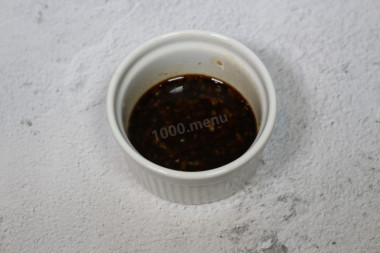
Now prepare all the ingredients needed to make the Chinese dressing. To do this, mix soy sauce, sugar, rice vinegar and crushed garlic.
Step 8:
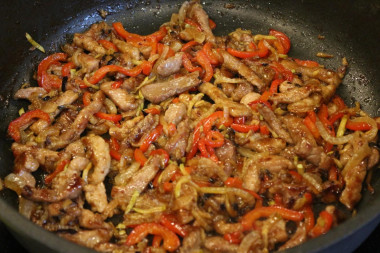
Mix all the ingredients well and add them to the pan, where the meat and vegetables are already lying. Stir everything again and heat over medium heat for two minutes.
Step 9:
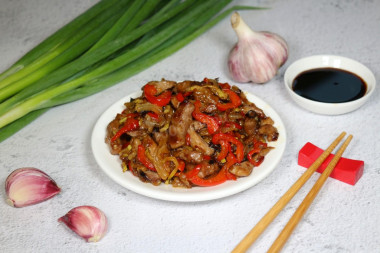
Bon appetit!
When adding soy sauce to a dish, it is worth considering that it has a rather salty taste. Reduce the total amount of salt, otherwise you risk over-salting.
Since the degree of salinity, sweetness, bitterness, sharpness, acid, burning is individual for everyone, always add spices, spices and seasonings, focusing on your taste! If you put some of the seasonings for the first time, then keep in mind that there are spices that it is especially important not to shift (for example, chili pepper).
To check whether the oil has warmed up well enough in the pan, you can do it in a simple way. Lower a wooden spatula into it. If bubbles have gathered around it, then you can start the frying process.
Caloric content of the products possible in the composition of the dish
- Onion - 41 kcal/100g
- Zucchini - 23 kcal/100g
- Pork fat - 333 kcal/100g
- Pork meat - 357 kcal/100g
- Pork - low-fat roast - 184 kcal/100g
- Pork chop on a bone - 537 kcal/100g
- Pork - schnitzel - 352 kcal/100g
- Pork Shoulder - 593 kcal/100g
- Boar's leg - 113 kcal/100g
- Pork - 259 kcal/100g
- Sweet pepper - 27 kcal/100g
- Eggplant - 24 kcal/100g
- Garlic - 143 kcal/100g
- Ground black pepper - 255 kcal/100g
- Soy sauce - 51 kcal/100g
- Vegetable oil - 873 kcal/100g
- Salt - 0 kcal/100g
- Brown sugar - 394 kcal/100g
- Rice vinegar - 20 kcal/100g
- Potato starch - 300 kcal/100g
- Ginger Powder - 335 kcal/100g

